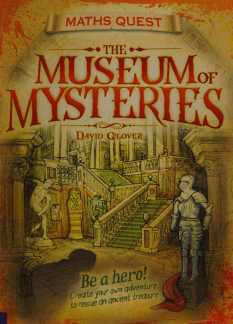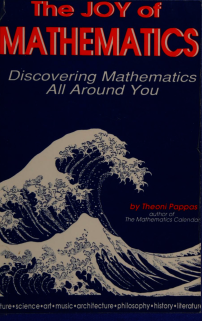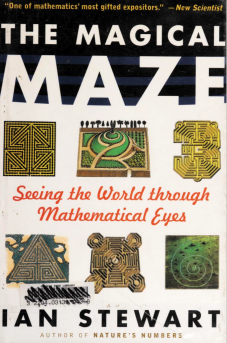
Structure of Program Bloom's Taxonomy of Critical Thought
Based on the thoughts and work of Integrating Instruction in Math by Forte and Schurr - If you find this summary useful, consider purchasing the book - It is full of examples and ideas, methodology and inspiration. This is a non-affiliated promotion! Just a great book! I was not able to find the contact information for the authors or publishers, but if you happen to know them, please let them know that they created a great product and that it is being promoted here!

- Knowledge Level Learn the information. Sample verbs: define, find, follow directions, identify, know, label, list, memorize, name, quote, read, recall, recite, recognize, select, state, write. Example: "Define mean, median, mode." (Mean, median, mode)
- Comprehension Level Understand the information. Sample verbs: account for, explain, express in other terms, give examples, give in own words, group, illustrate, infer, interpret, paraphrase, recognize, retell, show, simplify, summarize, translate. Example: "Give brief description of at least five different kinds of graphs." (Graphs)
- Application Level Use the information. Sample verbs: apply, compute, construct, construct using, convert (in math), demonstrate, derive, develop, discuss, generalize, interview, investigate, keep records, model, participate, perform, plan, produce, prove (in math), solve, use, utilize. Example: "Give examples of three times you have used fractions in your daily life within the last week." (Fractions)
- Analysis Level Break the information down into its component parts. Sample verbs: analyze, compare, contrast, criticize, debate, determine, diagram, differentiate, discover, draw conclusions, examine, infer, relate, search, sort, survey, take apart, uncover. Example: "Make a study of the boundaries of the world's time zones. Try to find out why particular boundaries were established (for example, why are many time zones boundaries irregular?)." (Time)
- Synthesis Level Put information together in new and different ways. Sample verbs: build, combine, create, design, imagine, invent, make up, present, produce, propose. Example: "Write a fictitious account of a situation in which estimation was used unwisely and without proper consideration. Build a sequence of events to show the point at which the decision based on estimation was made. From there, move to a climax revealing the results of the decision." (Estimation)
- Evaluation Level Judge the information. Sample verbs: assess, defend evaluate, grade, judge, measure, perform a critique, rank, recommend, select, test, validate, verify. Example: "Design a skit for the class to demonstrate the use of a set of measuring tools in a very unusual and entertaining setting. ie weighing and measuring an elephant. Baking cakes for the entire student body of the school. Determining the weight and length of a grasshopper." (Measurements)
For more see the book
Structure of Program William's Taxonomy of Creative Thought
- Fluency Enables the learner to generate a great many ideas, related answers or choices in a given situation. Generate as many ideas, thought or answers. Brainstorm! Example: "Make a list of occupations, hobbies, and other daily activities that depend on simple arithmetic."
- Flexibility Lets learner change sizes, shapes, quantities, time limits, requirements, objectives, or dimensions in a given situation to generate a variety of categories and take detours, offering alternatives
- Originality Causes learners to seek new ideas by suggesting unusual twists to change content or come up with clever responses to a given situation. Unique and new combinations, connections, perspectives. Example: "Use the graphics program on your classroom computer to create original designs, relying on math concepts such as measurements and geometric shapes. Discuss the math elements in the design."
- Elaboration Helps student stretch by expanding, enlarging, enriching or embellishing possibilities that build on previous thoughts or ideas. In expanding a deepening of understanding can be achieved. Example: "Select a difficult problem from your science class that requires the use of mathematics to solve. Rather than focusing on finding a solution, concentrate on the problem itself, relating it to other ideas and concepts. Look for reasons for the existence of the problem before forcing a solution."
- Risk Taking Enables learner to deal with the unknown by taking chances, experimenting with new ideas and tackling new challenges. Explore! Try! Make mistakes! Example: "Write a brief essay to convince your school's teachers and administration to allow the use of calculators during achievement and aptitude tests."
- Complexity Permits learner to create structure in an unstructured setting or build a logical order in a given situation. The simplest things show their complexity upon inspection. Don't fear it! Example: "
- Curiosity Encourages the learner to follow a hunch, question alternatives, ponder outcomes, wonder about options in a given situation. Example: "How does the study and use of tessellations help a student understand geometry?"
 tessellations
tessellations - Imagination Allows learner to visualize possibilities, build images in mind, picture new objects, or reach beyond limits of the practical. Fantastical! Example: "Write a detective story, where the detective uses probability to figure out something about the crime or criminal." (An example would be the pilot of a tv show called Numb3rs. Not a show for young kids - It's about an FBI agent who uses a math professor to help solve crime!- consider this before allowing child to watch it.) Another very different example - ART AND MATH meet here!
For more see the book
Investigative Cards
How to Use
- Select a topic of interest in the area of study
- Collect information associated with your topic- identify major terms, background data, major concepts related to the theme
- Write three different questions, tasks, challenges or activities for each (use Bloom's Taxonomy above)
- Knowledge: record the sum total of the number of dots that appear on a die.
- Comprehension: Choose a dice game with which you are familiar and explain how the dice are used in the game
- Application: Toss a pair of dice ten times, record the numbers. Toss a pair of dice twenty times, recording the numbers. Finally 30 times, recording the numbers. Summarize your results.
- Analysis: Deduce how and why you think dice were invented.
- Synthesis: Invent a game that uses dice
-
Evaluation: Rank the dice games that you know how to play from least to most favorite. Give reasons for your preferences.
For more see the book
Cooperative Learning as Instructional Tool
Positive Interdependence requires the students to assist one another in the learning process through common goals, joint rewards, shared resources, and specified role assignments.
Face-to-Face Interaction requires students to actively engage in discussion, problem solving, decision making and mutual assignment completion.
Individual accountabilitiy requires each student carry through on their share of the work and to contribute as an individual to the established common goal.
Interpersonal skills requires group members to learn and apply a range of communication and active learning skills.
Group Processing requires the students to consistently evaluate their ability to function as a group by obtaining legitimate feedback and reinforcement.
Roles - possible roles could include: Recorder, Time Keeper, Manager, Gopher, Encourager
Rules - possible rules could include:
- Students assume responsibility for their own behavior
- Students are accountable for contributing to the group's work
- Students are expected to help any group member who needs it
- Students ask the teacher for help only as a last resort
-
Students may not 'put down' or embarrass any group or group member.
See the book for suggested projects
Journaling for Metacognition
 Authentic ways of collecting and assessing data that require collaboration among students, teachers and peers. It encourages student ownership through self-assessment, is more flexible with time limits and allows for students to note their strengths and weaknesses. While journaling minimizes competition, it makes use of individual learning styles and interest.
Authentic ways of collecting and assessing data that require collaboration among students, teachers and peers. It encourages student ownership through self-assessment, is more flexible with time limits and allows for students to note their strengths and weaknesses. While journaling minimizes competition, it makes use of individual learning styles and interest.
![]() Some reflection starters statements:
Some reflection starters statements:
- Something important I learned from today's lesson is....
- I wish I didn't have to remember so much about because
- A concept I would like more information about is ...
![]() Some springboards for critical thinking:
Some springboards for critical thinking:
- How about finding out why people like (or don't like) mathematics?
- What if there were no universal counting or numbering system in our society?
- Can you make a list of math skills that everyone should have as a graduation senior in order to be literate in the subject?
- What are your feelings about computers and their impact on your life so far?
![]() Some springboards for creative thinking:
Some springboards for creative thinking:
- What advice would you give a middle school math teacher?
- How would you improve our monetary system?
- Design a timepiece that is better than a watch.
- Make a list of the words you can think of to describe a polygon
- What would you do if you saw someone cheating on a math test?
- Think of an app that uses mathematics to help people in their daily lives.
- Write a thank you note to Fibonacci, telling him how much you appreciate his work on discovering patterns in nature.
- Think of 20 different real world applications of math concepts.
![]() Some springboards based on Bloom's taxonomy
Some springboards based on Bloom's taxonomy
- Knowledge - locate and define five important terms associated with the decimal system.
- Comprehension - summarize what you know about geometric solids.
- Application - discuss reasons that plotting and locating information on a grid are important skills to have.
- Analysis - pros and cons of majoring in mathematics in college
- Synthesis - invent a new numbering system - write an explanation of it.
-
Evaluation - determine the most difficult topics in math (for you to learn) and give reasons.
For more see the book
More than a Classroom Project
- Organize a "Celebrate Math Week" for your school
- Locate poems, essays, picture books and short stories that focus on math related themes and topics
- Do a research project and create content on how numbers and shapes are used in the world (or in the world of art)
- Research and create a talking series about famous mathematicians, creating a timeline with important events in each one's life. Include people of the world and women!
- Design a series of mathematical equations that describe special situations, encounters, events or adventures that have occurred in history such as wars, elections, invention or discoveries - write a detailed description to accompany each of these equations. Present your work
- Organize a math club - create a math logo, handshakes, slogans, set membership rules and math related activities. Deliver a speech detailing the benefits of the joining the club.
- Start a math inspired band
- Create a math calendar - December 1st - Bingo was invented in 1929. Have a math related bingo night / December 17 Wright brothers' flight 1903. Have a paper plane contest
-
Use cooking as a hands on mathematical experience.
For more see the book
![]() Printable Game -
(from Institute of Play)
Printable Game -
(from Institute of Play)
![]() Absolute Blast; An adding and subtracting, integers and using absolute value
Absolute Blast; An adding and subtracting, integers and using absolute value
Population Dynamics Collection The fascinating mathematics of creating mathematical models to describe the changes in populations of living creatures. A hive of bees, a colony of ants and a parliament of owls.
These are just a few examples of animal groups, or populations. A population is dynamic; this means it is constantly changing in size and demographics. New animals are born, old animals die and other factors such as drought, fire and lack of predators, all cause a change in the population.
MIT Blossoms Enrichment - Engineering, Math, Science, Technology
Mathematics and Camouflage
Reading and Resources
Mind Your Decision Math and Logic Puzzles with Explanations
Free Fun Math activities from M+A+T+H=love
 Looking to team up? Love numbers, math and the mathematical? Hate math? Struggling? Know kids? Know how to code? Have other skills? Consider creating a program together to target one learning difficulty in math together! It can be a game, it can be a way of explaining things in a different way, or a hands on experience! Contact me @ admin@parkfuturesedu.com
Looking to team up? Love numbers, math and the mathematical? Hate math? Struggling? Know kids? Know how to code? Have other skills? Consider creating a program together to target one learning difficulty in math together! It can be a game, it can be a way of explaining things in a different way, or a hands on experience! Contact me @ admin@parkfuturesedu.com








































